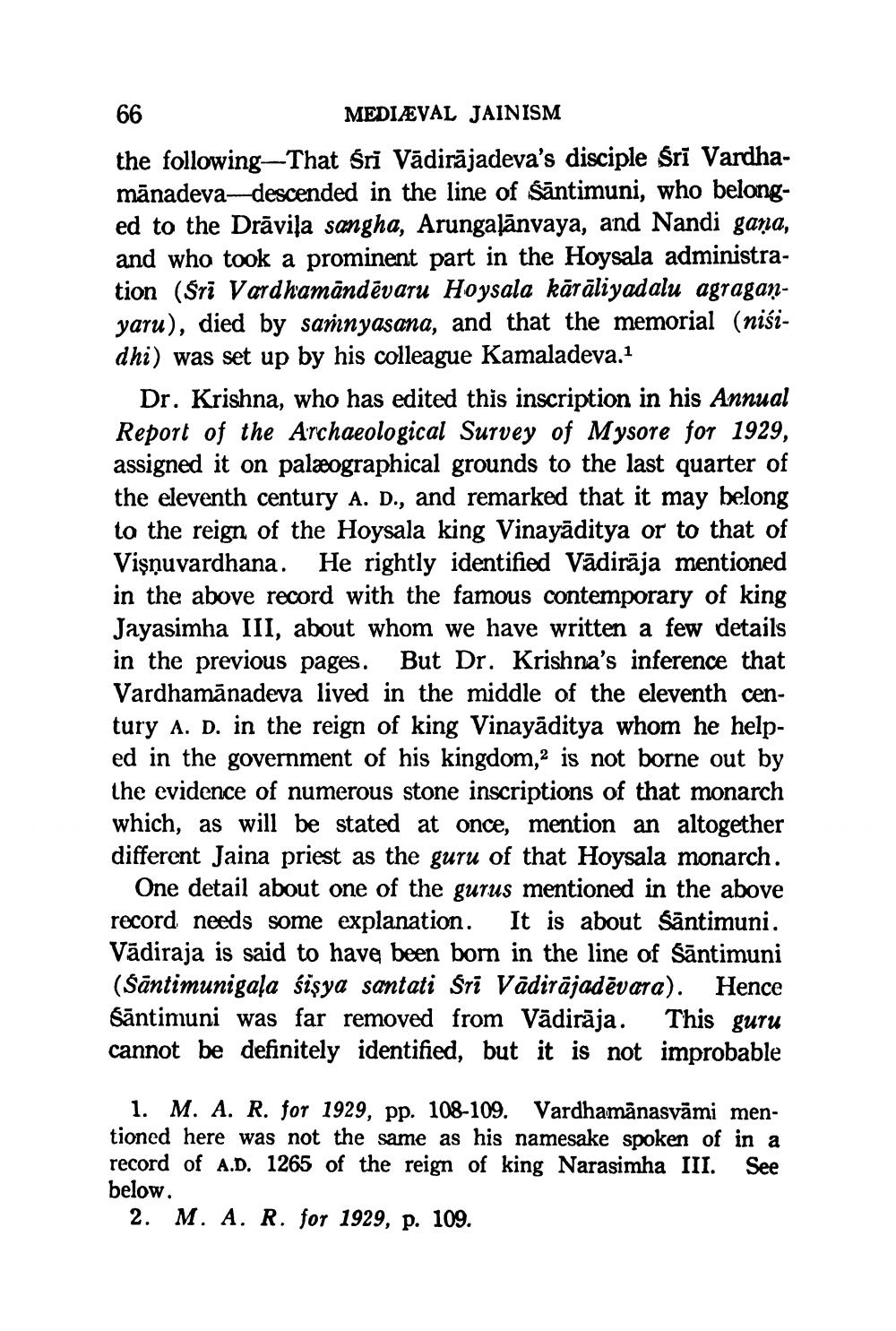________________
66
MEDIÆVAL JAINISM the following—That Sri Vādirājadeva's disciple Sri Vardhamānadeva—descended in the line of Sāntimuni, who belonged to the Drāviļa sangha, Arungalānvaya, and Nandi gana, and who took a prominent part in the Hoysala administration (Sri Vardhamandēvaru Hoysala kārāliyadalu agraganyaru), died by sarnyasana, and that the memorial (niśidhi) was set up by his colleague Kamaladeva.1
Dr. Krishna, who has edited this inscription in his Annual Report of the Archaeological Survey of Mysore for 1929, assigned it on palæographical grounds to the last quarter of the eleventh century A. D., and remarked that it may belong to the reign of the Hoysala king Vinayāditya or to that of Vişnuvardhana. He rightly identified Vadirāja mentioned in the above record with the famous contemporary of king Jayasimha III, about whom we have written a few details in the previous pages. But Dr. Krishna's inference that Vardhamānadeva lived in the middle of the eleventh century A. D. in the reign of king Vinayāditya whom he helped in the government of his kingdom, is not borne out by the evidence of numerous stone inscriptions of that monarch which, as will be stated at once, mention an altogether different Jaina priest as the guru of that Hoysala monarch.
One detail about one of the gurus mentioned in the above record needs some explanation. It is about Säntimuni. Vadiraja is said to have been born in the line of Sāntimuni (śāntimunigala śişya santati Sri Vadirājadēvara). Hence Sāntimuni was far removed from Vădirāja. This guru cannot be definitely identified, but it is not improbable
1. M. A. R. for 1929, pp. 108-109. Vardhamanasvāmi mentioned here was not the same as his namesake spoken of in a record of A.D. 1265 of the reign of king Narasimha III. See below.
2. M. A. R. for 1929, p. 109.




